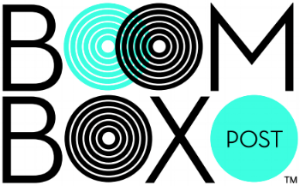One of the biggest challenges in sound design is creating unique and beautiful design work that will work with the musical score rather than against it. Because television schedules are tight, composers often need absolutely every moment they can get, and the music goes directly to the mix stage without the sound design team ever hearing it. In a dream world, we would be constantly collaborating with the composers and music departments. But unfortunately, we’re often on two secluded islands, trying to create something fantastic on our own, and just hoping that it will work when it’s all put together in the mix.
As I get more and more experience as the re-recording mixer, I’ve come to intuitively understand what will work and what will never work in a sound design build once the music is added, no matter how cool it sounds in the sound effects preview.
The key to designing sound that will work flawlessly with any musical score hinges greatly on the use of inharmonic elements rather than harmonic ones. But to understand what will work and when, we need to dive deep into the concept of harmonic versus inharmonic elements.
Over at our other company, Boom Box Library, we recently released “Magic Chimes,” a library of mark tree and bell tree recordings for sound design and music applications. The library has been a big success thus far, clearly filling a need in the sound library community. Creating it from scratch was very fun, so I thought it would be interesting to share the process with you.
We are extremely proud to announce the release of our latest Boom Box Library: The Magic Chimes SFX Library!
The Magic Chimes SFX Library contains a wide variety of professional mark tree (the professional name for wind chimes) and bell tree sound effect recordings. These include glissandos, scales, single notes, steadies, shaking, and more.
Sound Particles is a 3D audio software that uses particles. Each particle corresponds to a 3D audio object which is then captured using a virtual microphone. This allows for very interesting and creative sound design as we can place the audio source anywhere in a 3D virtual space. Instead of working on a linear workflow, Sound Particles allows us to visualize and place each sound in a 3D space. Check out a few cool designs we did below!





